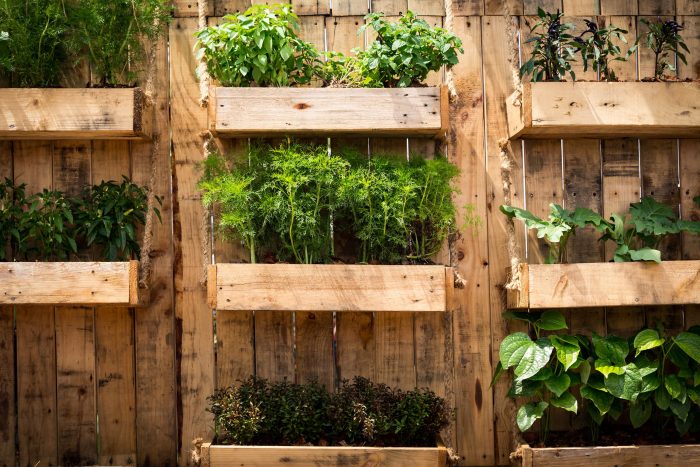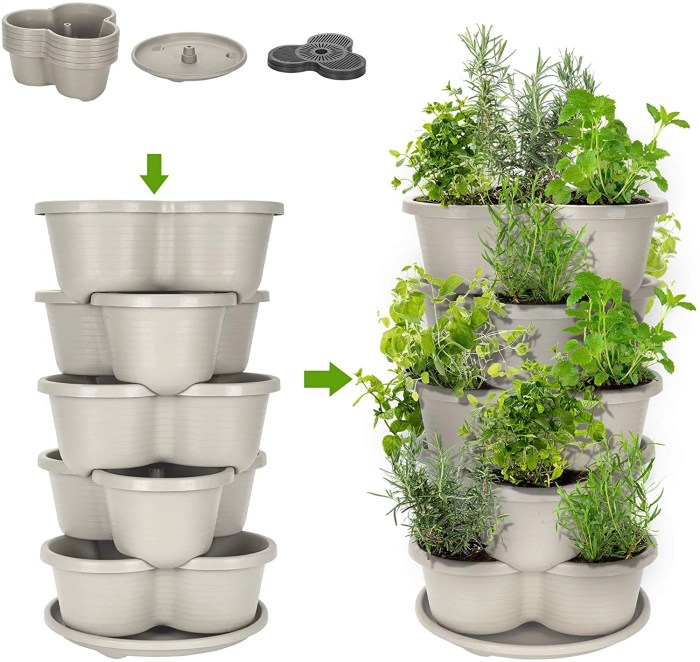Embark on a journey into the world of indoor hanging vegetable gardening, a space-saving and rewarding practice that brings fresh produce right to your fingertips. This comprehensive guide will equip you with all the knowledge and techniques you need to design, plant, and maintain a thriving indoor hanging vegetable garden.
From selecting the ideal plant varieties to mastering vertical gardening techniques and ensuring optimal lighting and environmental conditions, we’ll cover every aspect of indoor hanging vegetable gardening, empowering you to cultivate a verdant oasis in your home.
Design and Setup

Creating an indoor hanging vegetable garden requires careful planning and execution. The first step is to determine the space available and choose the appropriate hanging system. Vertical gardens are a great option for small spaces, as they maximize vertical space and allow for multiple plants to be grown in a limited area.
Lighting is crucial for indoor vegetable gardens. Natural sunlight is ideal, but if it’s not available, artificial lighting can be used. LED grow lights are a popular choice, as they provide the necessary spectrum of light for plant growth and are energy-efficient.
Irrigation Systems
Watering is another important aspect of indoor vegetable gardening. Drip irrigation systems are a good option, as they deliver water directly to the roots of the plants, minimizing water waste and reducing the risk of overwatering.
Plant Selection and Care

When choosing vegetables for an indoor hanging garden, it’s essential to consider factors such as growth habits, yield potential, and maintenance requirements. Opting for compact and vining varieties is ideal, as they optimize vertical space and maximize yield.
With the rise of indoor hanging vegetable gardens, basket planters for indoor plants have become increasingly popular. These planters offer several advantages, including improved air circulation, better drainage, and a more aesthetic appeal. They are also a great way to maximize space in small apartments or homes with limited outdoor gardening options.
Indoor hanging vegetable gardens not only provide fresh, organic produce but also add a touch of greenery and freshness to indoor spaces.
Suitable Vegetable Varieties
- Tomatoes:Cherry and grape tomatoes are space-efficient choices with high yields.
- Cucumbers:Miniature or vining varieties are perfect for hanging gardens, providing ample fruit production.
- Peppers:Compact varieties like bell peppers and chili peppers offer vibrant colors and flavors.
- Beans:Bush or pole beans are excellent options, providing a continuous harvest.
- Herbs:Basil, parsley, and chives are not only easy to grow but also add flavor and aroma to dishes.
Care and Maintenance, Indoor hanging vegetable garden
Proper care is crucial for the success of an indoor hanging garden. Regular watering, fertilization, and sunlight exposure are essential.
- Watering:Water plants thoroughly, allowing the soil to dry out slightly between watering.
- Fertilization:Fertilize plants every few weeks with a balanced fertilizer.
- Sunlight:Most vegetables require at least 6 hours of sunlight per day. Use grow lights if natural light is insufficient.
- Pruning:Remove dead or diseased leaves and prune vines to encourage new growth.
Vertical Gardening Techniques
Vertical gardening is a space-saving technique that involves growing plants vertically, making the most of vertical space in limited areas. It’s a suitable option for balconies, patios, or small gardens. Various vertical gardening techniques are available, each with its own advantages and suitability for different vegetables.
Vertical gardening techniques provide several benefits. They allow for efficient use of space, improve air circulation around plants, and facilitate easier harvesting. Additionally, vertical gardening can enhance the aesthetics of a space, creating a visually appealing display of greenery.
Trellising
Trellising involves supporting climbing vegetables on a frame or structure, allowing them to grow vertically. This technique is ideal for vegetables like tomatoes, cucumbers, and beans. Trellising provides support, prevents sprawling growth, and improves fruit production by allowing plants to access more sunlight and air.
Hanging Baskets
Hanging baskets are containers suspended from above, suitable for growing vegetables with trailing or cascading growth habits. They are ideal for strawberries, herbs, and leafy greens. Hanging baskets provide good drainage, allow for easy watering and harvesting, and add a decorative touch to vertical gardens.
Indoor hanging vegetable gardens are a great way to grow fresh produce in small spaces. They can be hung from the ceiling or on walls, and they require very little maintenance. If you’re looking for a way to add some greenery to your home and grow your own food, an indoor hanging vegetable garden is a great option.
You can also use decorative wall planters indoor to create a beautiful and functional display of your plants.
Wall-Mounted Planters
Wall-mounted planters are containers attached to walls or fences, providing a vertical growing surface. They are suitable for vegetables with shallow root systems, such as lettuce, spinach, and herbs. Wall-mounted planters save space, improve drainage, and add a vertical element to gardens.
Indoor hanging vegetable gardens offer a space-saving and convenient way to grow fresh produce at home. While many plants can be grown indoors, some are particularly well-suited for hanging planters, such as hanging plants for office . These plants not only add greenery and life to an indoor space but also provide fresh, healthy vegetables for your meals.
From tomatoes and peppers to strawberries and herbs, there are a variety of indoor hanging vegetable garden options to choose from, making it easy to create a thriving indoor garden.
Lighting and Environmental Control: Indoor Hanging Vegetable Garden

Indoor hanging vegetable gardens require specific lighting and environmental conditions to thrive. Understanding these requirements and implementing proper controls ensures optimal growth and yield.
Lighting Requirements
- Natural Light:Plants prefer bright, indirect sunlight for at least 6 hours daily. Position the garden near windows or skylights facing south or west for maximum exposure.
- Artificial Light:If natural light is insufficient, artificial light can supplement or replace it. Use grow lights specifically designed for plant growth, providing a full spectrum of light.
- Light Duration:Most vegetables require 12-16 hours of light daily. Use timers to automate light cycles, ensuring consistent lighting.
Environmental Factors
- Temperature:Ideal temperatures for most vegetables range from 65-80°F (18-27°C). Use a thermometer to monitor temperature and adjust accordingly with heating or cooling systems.
- Humidity:Vegetables prefer moderate to high humidity levels (50-70%). Mist the plants regularly or use a humidifier to maintain optimal moisture levels.
- Ventilation:Proper ventilation prevents mold and disease. Ensure the garden has adequate airflow by opening windows or using fans.
Troubleshooting and Maintenance
Maintaining a healthy indoor hanging vegetable garden requires addressing potential issues and implementing a regular maintenance schedule.
Common problems include pests, diseases, nutrient deficiencies, and pollination challenges. A proactive approach to troubleshooting and maintenance ensures optimal plant growth and productivity.
Pest Control
- Aphids: Use insecticidal soap or neem oil.
- Spider mites: Increase humidity or use insecticidal soap.
- Fungus gnats: Reduce watering frequency and use yellow sticky traps.
Disease Management
- Powdery mildew: Remove affected leaves and improve air circulation.
- Downy mildew: Use copper fungicide and improve drainage.
- Botrytis: Remove infected plants and maintain good ventilation.
Nutrient Deficiencies
- Nitrogen deficiency: Yellowing leaves; fertilize with nitrogen-rich fertilizer.
- Phosphorus deficiency: Purple or reddish leaves; fertilize with phosphorus-rich fertilizer.
- Potassium deficiency: Brown or yellow leaf margins; fertilize with potassium-rich fertilizer.
Pollination Assistance
- Hand pollination: Use a soft brush to transfer pollen between flowers.
- Introduce pollinators: Place a small fan near the plants to attract pollinating insects.
- Use a vibrator: Gently shake the plants to encourage self-pollination.
Maintenance Schedule
Establish a regular maintenance schedule to ensure optimal plant health.
- Watering: Water when the top inch of soil is dry to the touch.
- Fertilizing: Fertilize every two to three weeks with a balanced fertilizer.
- Pruning: Remove dead or diseased leaves and prune to encourage airflow and prevent overcrowding.
Final Summary
Whether you’re a seasoned gardener or a novice just starting out, this guide will provide you with the tools and knowledge you need to create a flourishing indoor hanging vegetable garden. Embrace the joy of growing your own fresh produce year-round, adding a touch of nature and nourishment to your indoor space.
Top FAQs
What are the best vegetables to grow in an indoor hanging vegetable garden?
Leafy greens such as lettuce, spinach, and kale, as well as herbs like basil, parsley, and chives, are excellent choices for indoor hanging gardens due to their compact growth habits and high yield potential.
How do I ensure proper lighting for my indoor hanging vegetable garden?
Natural light is ideal, but if it’s insufficient, you can supplement with artificial lighting. Grow lights specifically designed for indoor gardening can provide the necessary light intensity and spectrum.
How often should I water my indoor hanging vegetable garden?
The watering frequency will depend on factors such as the plant varieties, the size of the garden, and the humidity levels. As a general rule, water when the top inch of soil feels dry to the touch.